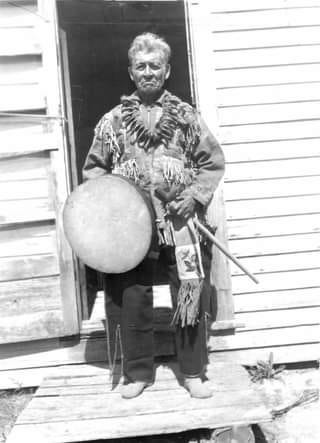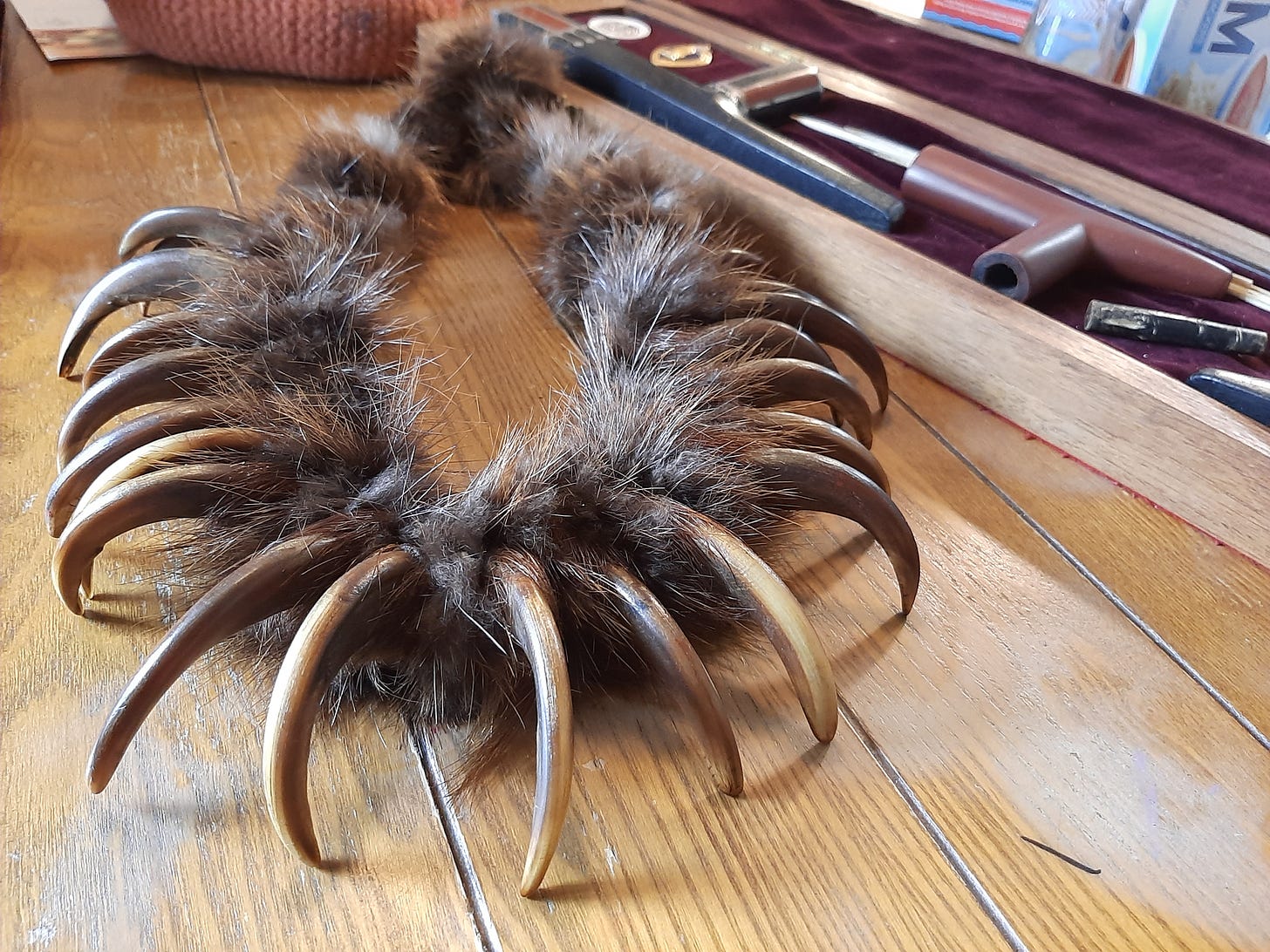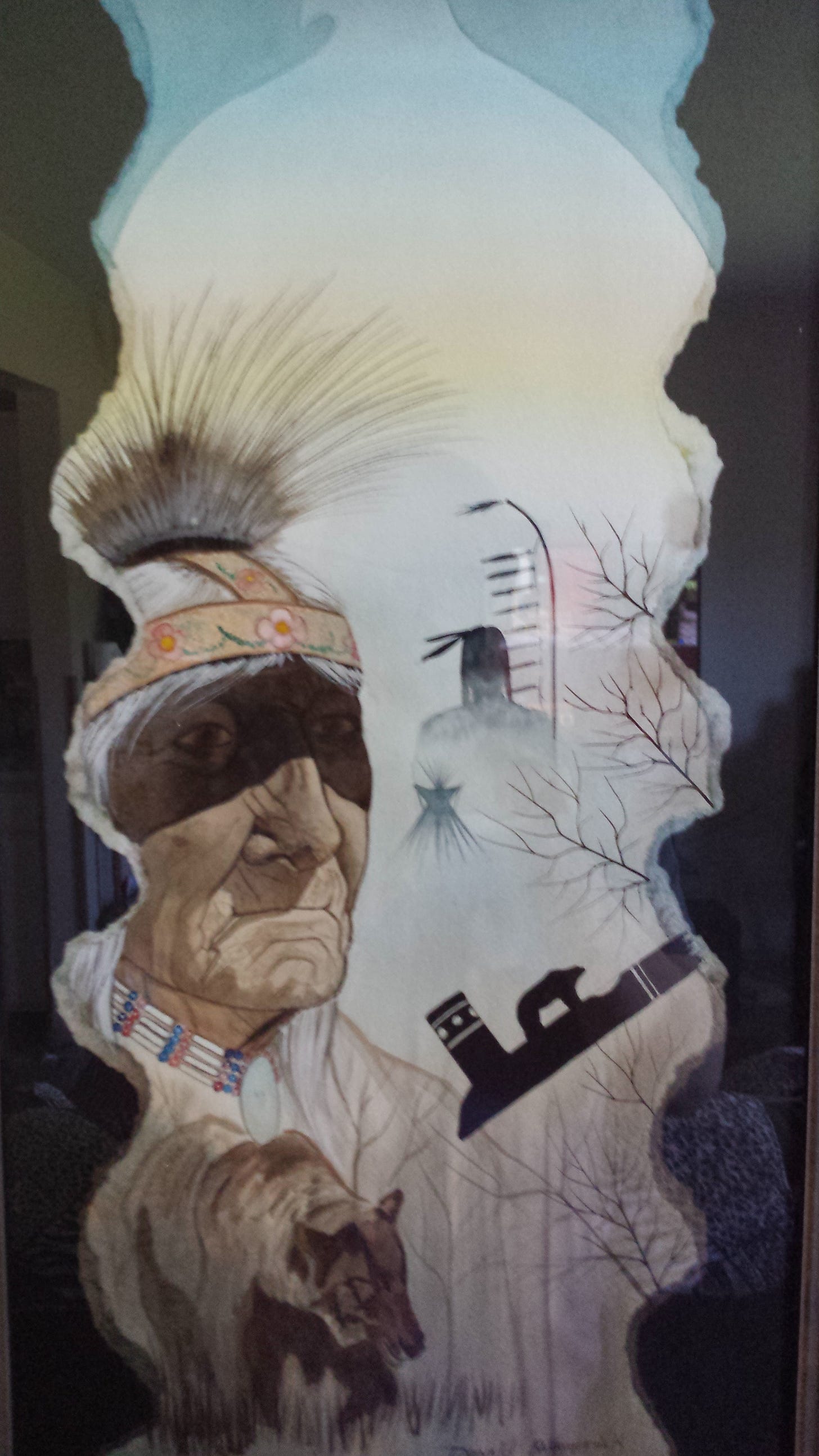Don Kakaygeesick showed me this photograph a few years ago of his great-grandfather Kakaygeesick.
This past October I spent an afternoon with Don to learn more about his family history before homesteaders like my great-grandparents arrived and settled land near Warroad at the turn of the twentieth century.
The bear claw necklace belonged to Don’s great-great-grandfather Chief Ay Ash Wash (1790-1895). Don had told me the story several years ago, but he’d never shown me the necklace before.
Kakaygeesick wore it with his regalia in ceremonies and told his children, grandchildren, and great-grandchildren about when his father, Chief Ay Ash Wash, fought to drive Dakota warriors away from their Ojibway village on Lake of the Woods.
Why had the Ojibway and Dakota been at war nearly a century before homesteaders arrived here? The Ojibway had split off as a tribe from the Algonquin in the late 1600s. Following a spiritual prophecy, they traveled until they found food growing on water (wild rice). They didn’t go to war with the Dakota over land or resources. Conflicts were created between the two tribes when the French traded weapons with the Ojibway. As British and American colonialists fought to establish borders and claim territories, they traded weapons with tribesmen, too, and fostered conflict between the tribes.
The Dakota and Ojibway fought battles in Minnesota at Sandy Lake in 1744, Mille Lacs in 1745, St. Croix River in 1755, Leech Lake in 1760 and Red Lake in 1770, but when exactly this battle took place near Warroad is uncertain though some believe it was one of the last skirmishes in the war.
Chief Ay Ash Wash had anticipated battle against the Dakota, Don tells me, and he had asked the Creator for a vision and dreamt he became a giant bear.
The attack came in the middle of the night west of the village where the two branches of the Warroad River twine together. Chief Ay Ash Wash lay sleeping inside his tipi when a Dakota warrior took an axe to his scalp.
When he regained consciousness, Chief Ay Ash Wash saw only dead Dakota warriors around him and next to him on the ground was a bear claw necklace.
Don set the necklace on his kitchen table. He showed me how he had replaced the original beaver pelt. Then he asked me if I knew what kind of bear had claws like that.
None around here, I knew that.
Grizzly, he told me. From Dakota territory.
Then he showed me this pipe.
Made of black stone found only at Buffalo Point on Lake of the Woods, the pipestem has a bear on top. Don tells me his great-great-grandfather Chief Ay Ash Wash smoked this peace pipe at a ceremony to end the Dakota-Ojibway war, likely sometime in the 1770s, nearly a century before the Homestead Act. This painting by Don Kakaygeesick is a visual representation of this history.









I loved this post and all the images included worked so well with it! That bear claw is something! That had to have been from at least 3, maybe 4, bear. That's incredible! I love how your posts give the images and artifacts a voice. They are their own characters in some ways, asking us to look, read, listen, then listen some more. Thank you for another great read!
I’ve never seen an artifact quite like this bear claw necklace. Wow.